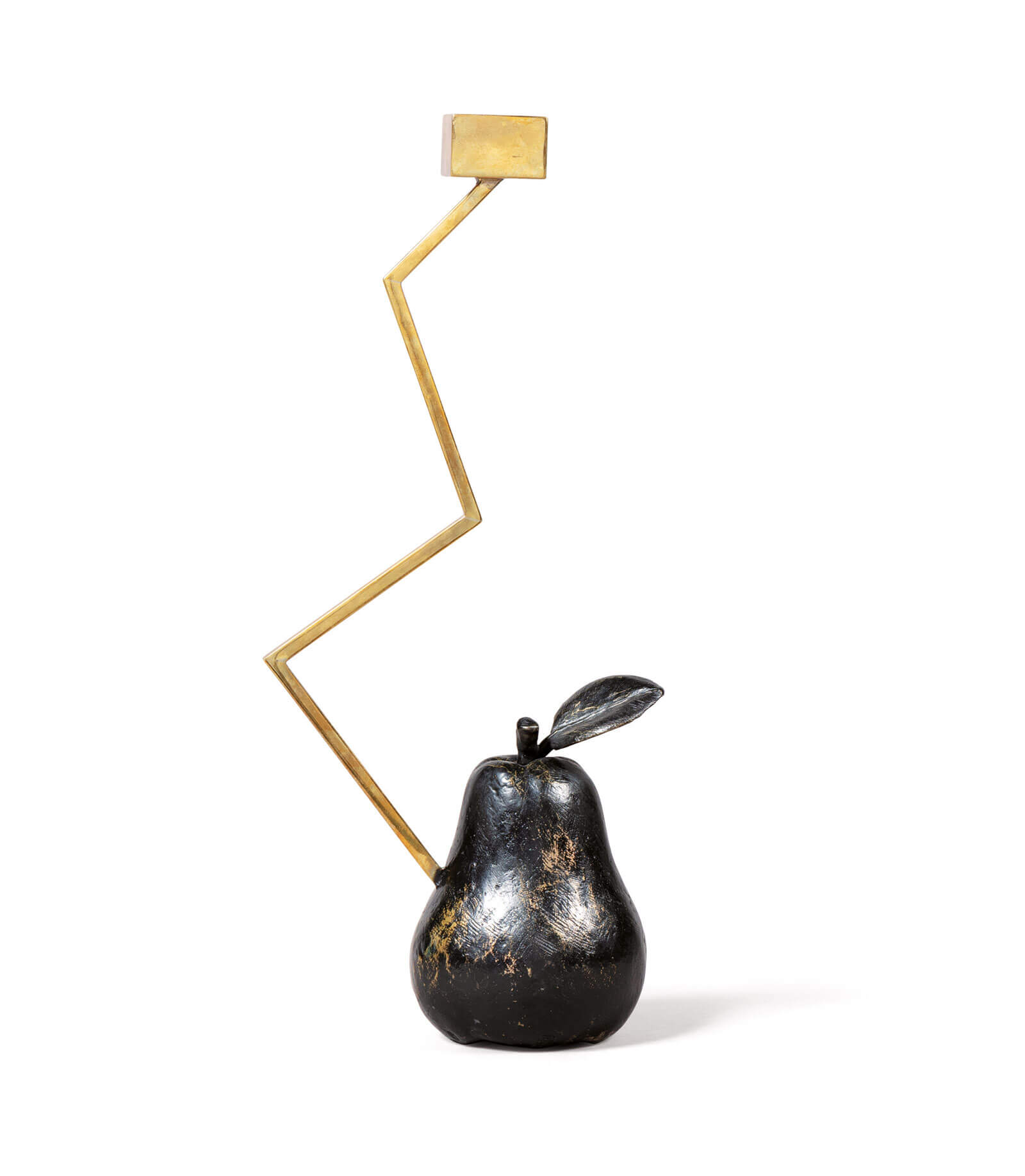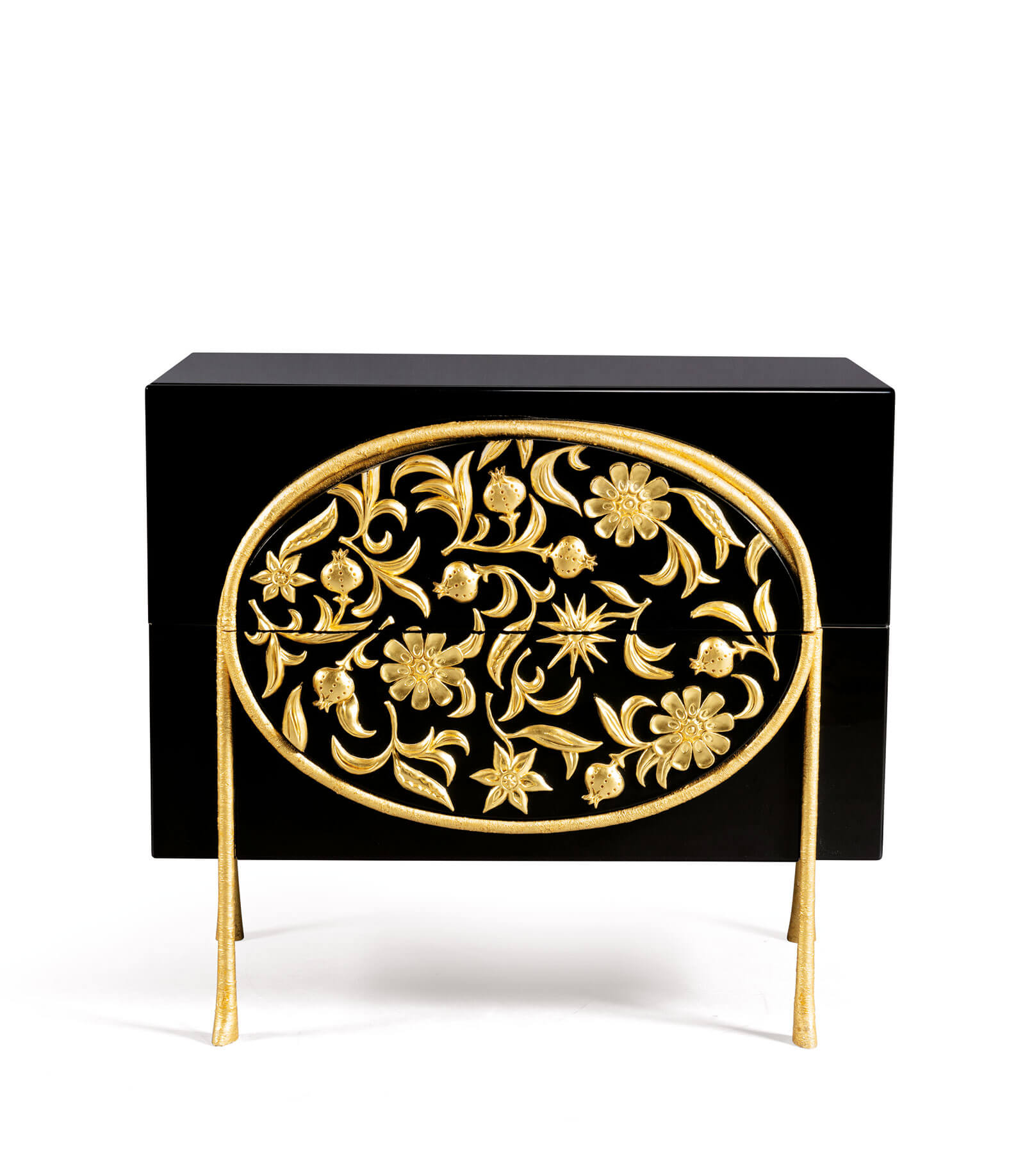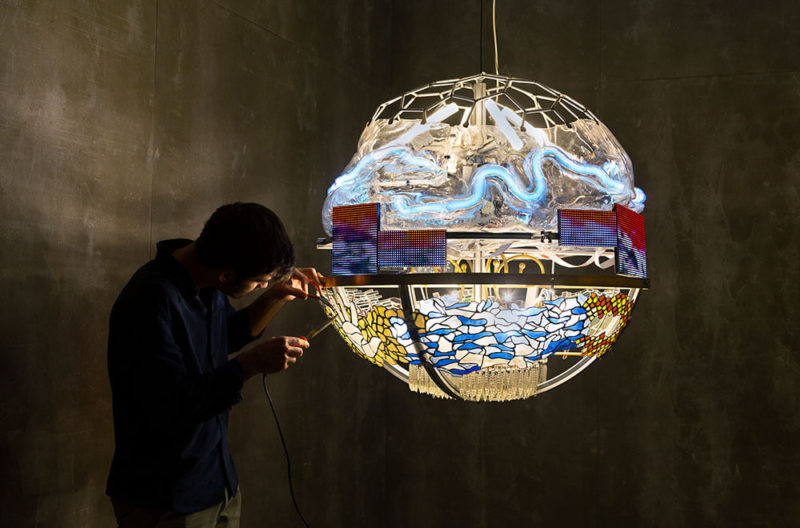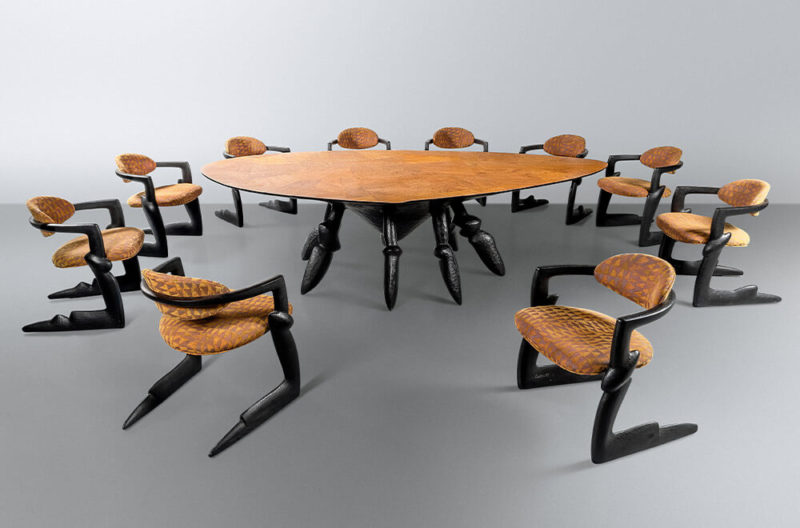French Design Sales: April 2021
Sales are boosted by a thirst for new acquisitions and revitalised interiors.
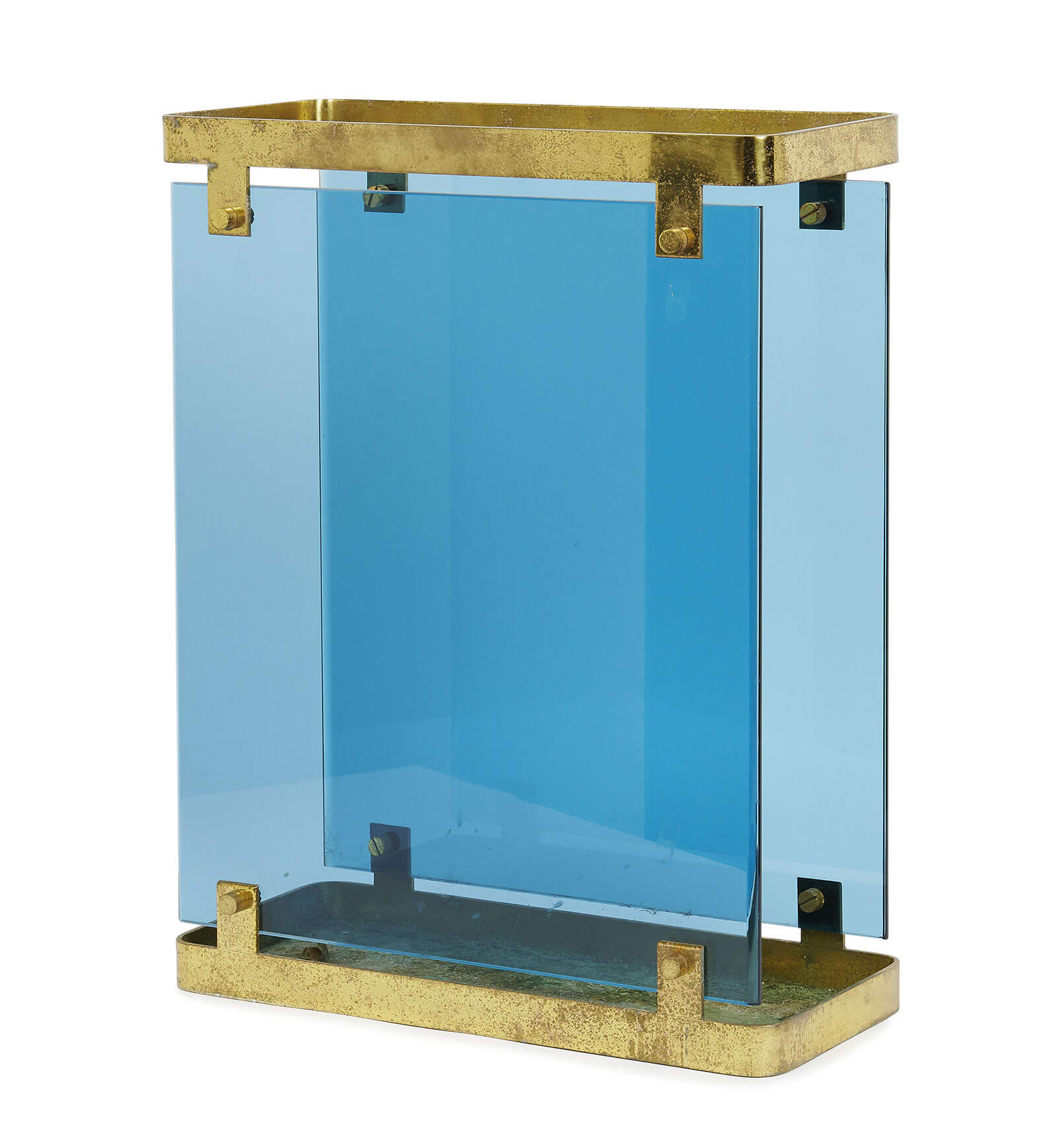
Fontana, ‘Umbrella stand’, circa 1960. (Estimate: €800-€1,200. Sold for €1,170)
COURTESY: Artcurial
REAL ESTATE IN the French countryside is booming, spurred on by lockdowns, remote working and a desire to be close to nature. This rural exodus is boosting auctions as collectors are actively acquiring pieces to furnish their new homes. At the same time, it is clear that housebound collectors have been actively updating their interiors, spending time researching and honing their taste.
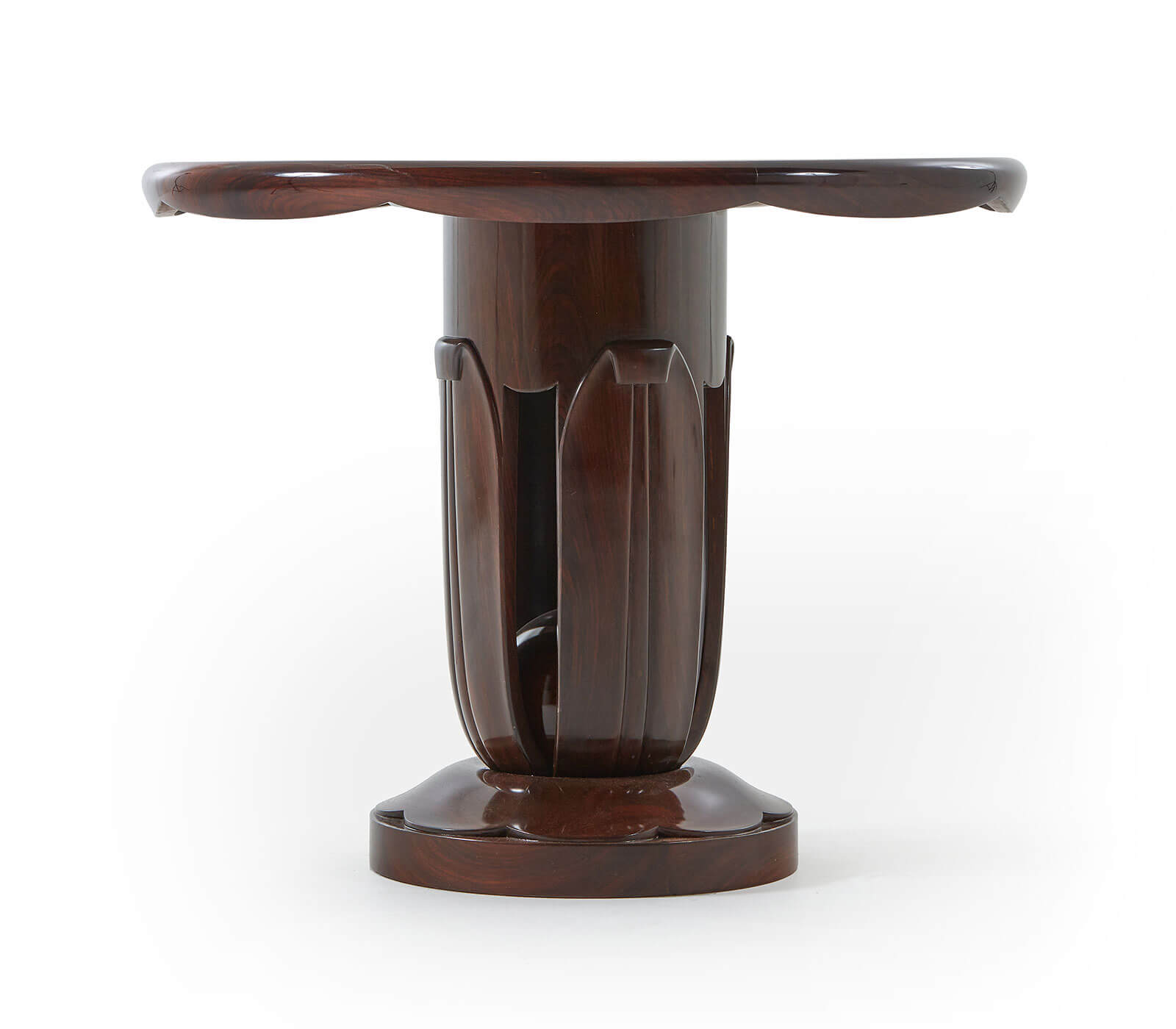
Louis Sue and André Mare for the Compagnie des Arts Français, circa 1925. (Estimate: €12,000-€15,000)
COURTESY: Gros & Delletrez
Frédéric Chambre, Piasa’s executive director, reports that collectors are paying closer attention to the Italian design market, as reflected in the €2.4m its Italian design sale in March realised. What particularly attracts collectors is the individual spirit and diverse characteristics of the pieces. “French and international collectors are looking more at Italian design, which is full of fantasy and multiple ways of treating forms and materials like wood and stone,” Chambre says. “There’s something for everyone’s tastes and an important variety in approaches and styles from 1930-1990.”
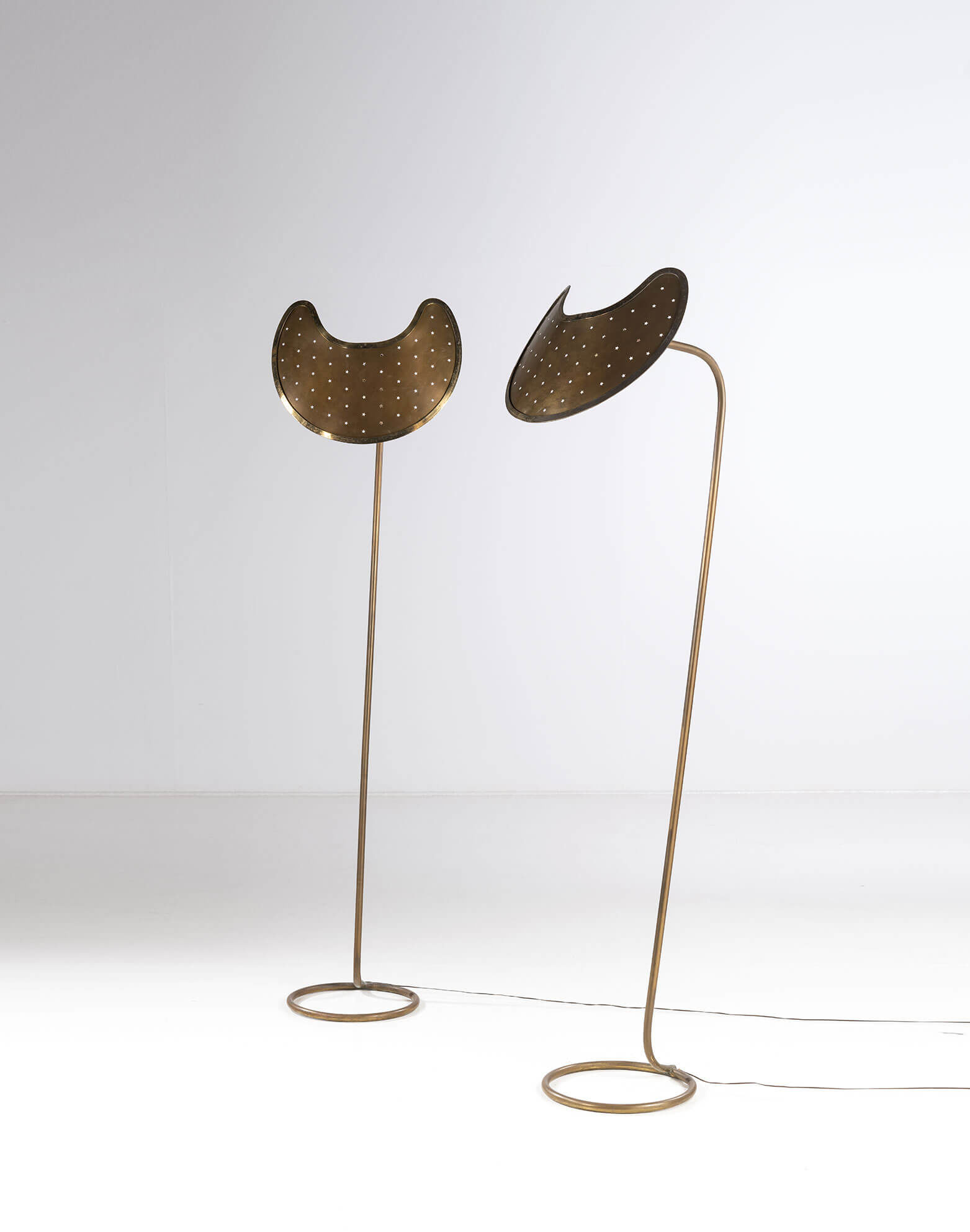
Guglielmo Ulrich, pair of floor lamps, 1940. (Estimate: €10,000-€15,000. Sold for €24,700)
COURTESY: Piasa / PHOTOGRAPH: © Xavier Defaix
Piasa has been organising specific sales of Italian as well as American, Scandinavian and Brazilian design for a few years. Dedicating sales to each category is evidently paying off. “In the last few months, all our design sales have pleasantly exceeded our objectives, enabling us to maintain our leadership on Italian design internationally,” Chambre enthuses.
The top ticket in March was a Gino Sarfatti floor lamp – ‘Model n. 1050/2’ (1951), produced by Arteluce – that fetched €89,700 (estimate €40,000-€60,000). In Sarfatti’s distinctive, graphic style it has yellow and grey intersecting lights and combines aluminium, brass, metal and marble.
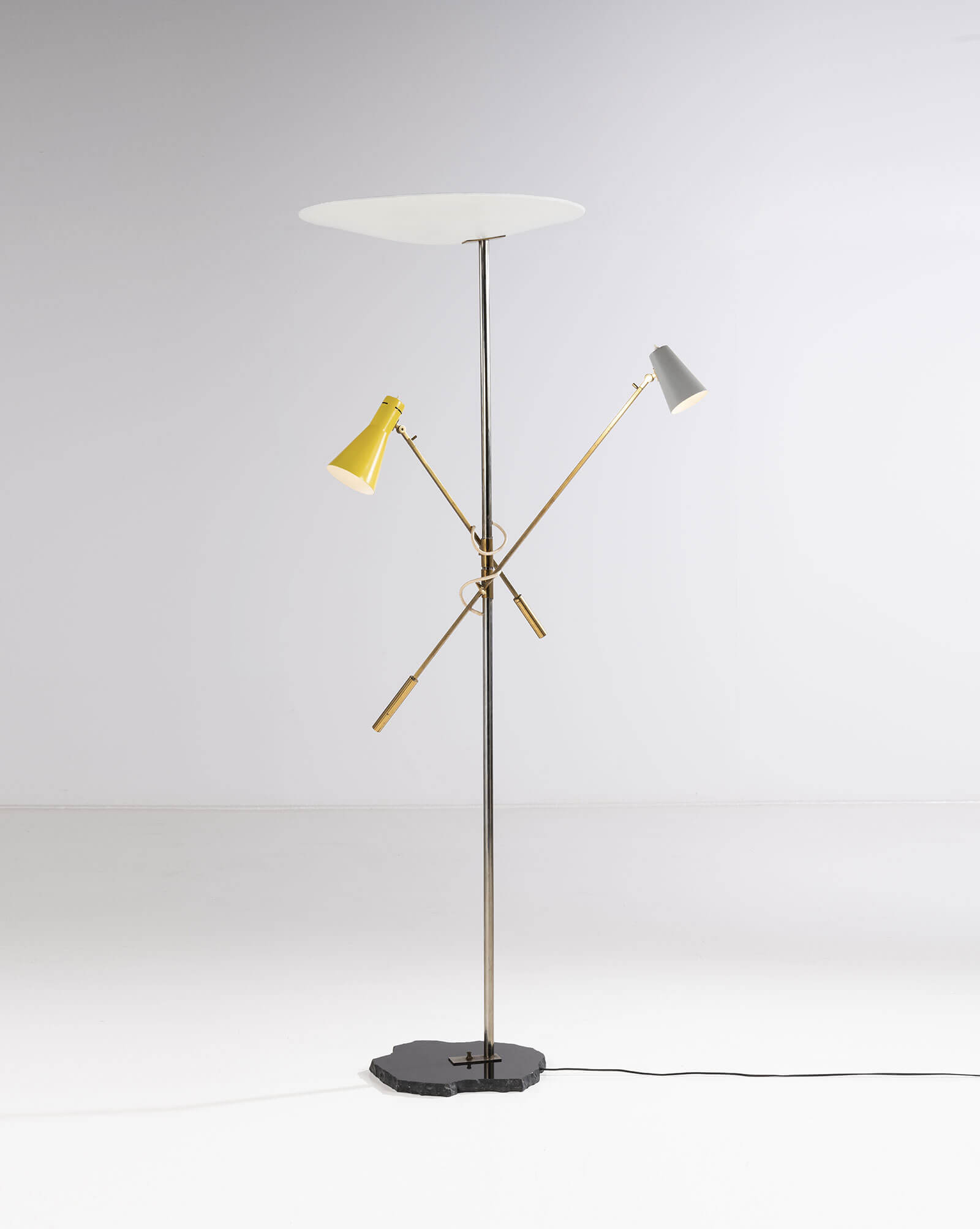
Gino Sarfatti, ‘Model n. 1050/2’ floor lamp, 1951. (Estimate: €40,000-€60,000. Sold for €89,700)
COURTESY: Piasa / PHOTOGRAPH: © Xavier Defaix
Gabriella Crespi’s table, ‘Scultura – Plurimi Series’, €27,300, achieved well due to the sculptural quality of two overlaid, lacquered wood and metal blocks. Equally, Enzo Mari’s beech table, ‘Metamobile’ series, €16,900, and Pierluigi Spadolini’s marble-topped console, €15,600, had architectural qualities, both bases constructed from numerous pieces of wood. Lighting by Max Ingrand and Angelo Lelii also performed well, as did furniture by Paolo Buffa and Ico Parisi.
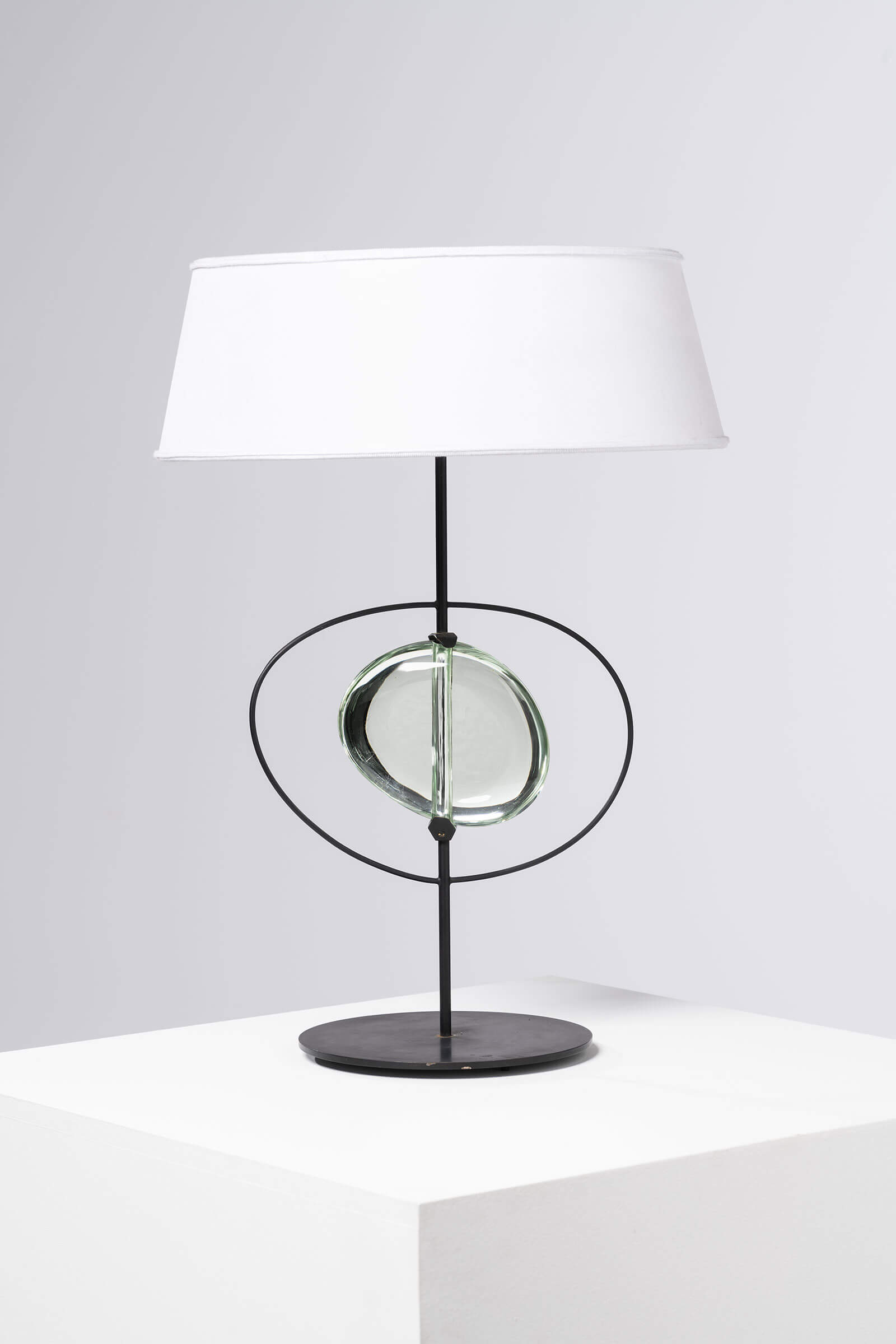
Max Ingrand, ‘Table lamp’, 1963 (Estimate: €20,000-€30,000. Sold for €45,500)
COURTESY: Piasa / PHOTOGRAPH: © Xavier Defaix
What is defining prices is whether something is from the original or a later edition. The black ‘Farfalle’ desk designed by Gio Ponti and decorated with lithographed butterflies by Piero Fornasetti – typifying how the duo would collaborate – went for €22,100 because it was from 1990. “If it had been from the first edition [created in 1960], it would have been four or five times the price,” Chambre says.
Artcurial’s twentieth-century interiors sale generated €904,000, soaring past the €500,000 estimate, with 84 percent of lots sold. The bulk of them scored relatively modest sums, from several hundred to a few thousand Euros. This was driven by the eagerness of collectors to purchase many pieces to furnish recently bought properties, or to change their interior design.
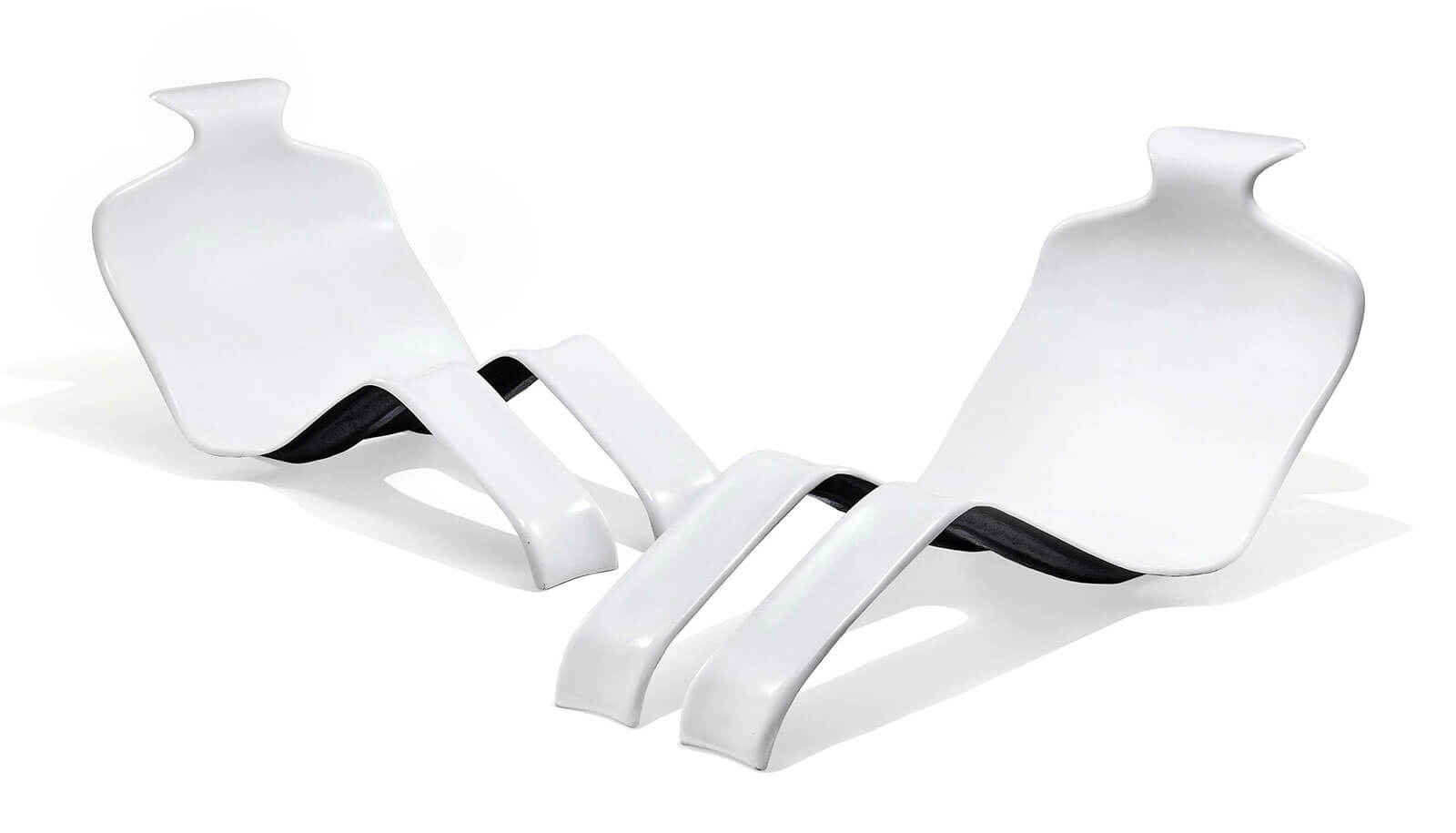
Olivier Mourgue, pair of ‘Bouloum’ lounge chairs, 1968. (Estimate: €1,500-€2,500. Sold for €3,120)
COURTESY: Artcurial
Sabrina Dolla, Artcurial’s Art Deco specialist, says: “Around 12 Parisian collectors had bought large country houses prior to the sale and needed to furnish them quickly and inexpensively. Many collectors didn’t buy one piece but ten and were bidding for up to 20 pieces. They were looking for quantity over a particular quality. This was the first time that this [shift] was so obvious.”
Another contributing factor to the sale’s success was the ease of online bidding, which drew buyers less accustomed to visiting auction houses and who might have felt intimidated by telephone bidding. “People like the freedom of sitting on their sofa and bidding online; it’s less rigid than telephone bidding,” Dolla remarks.
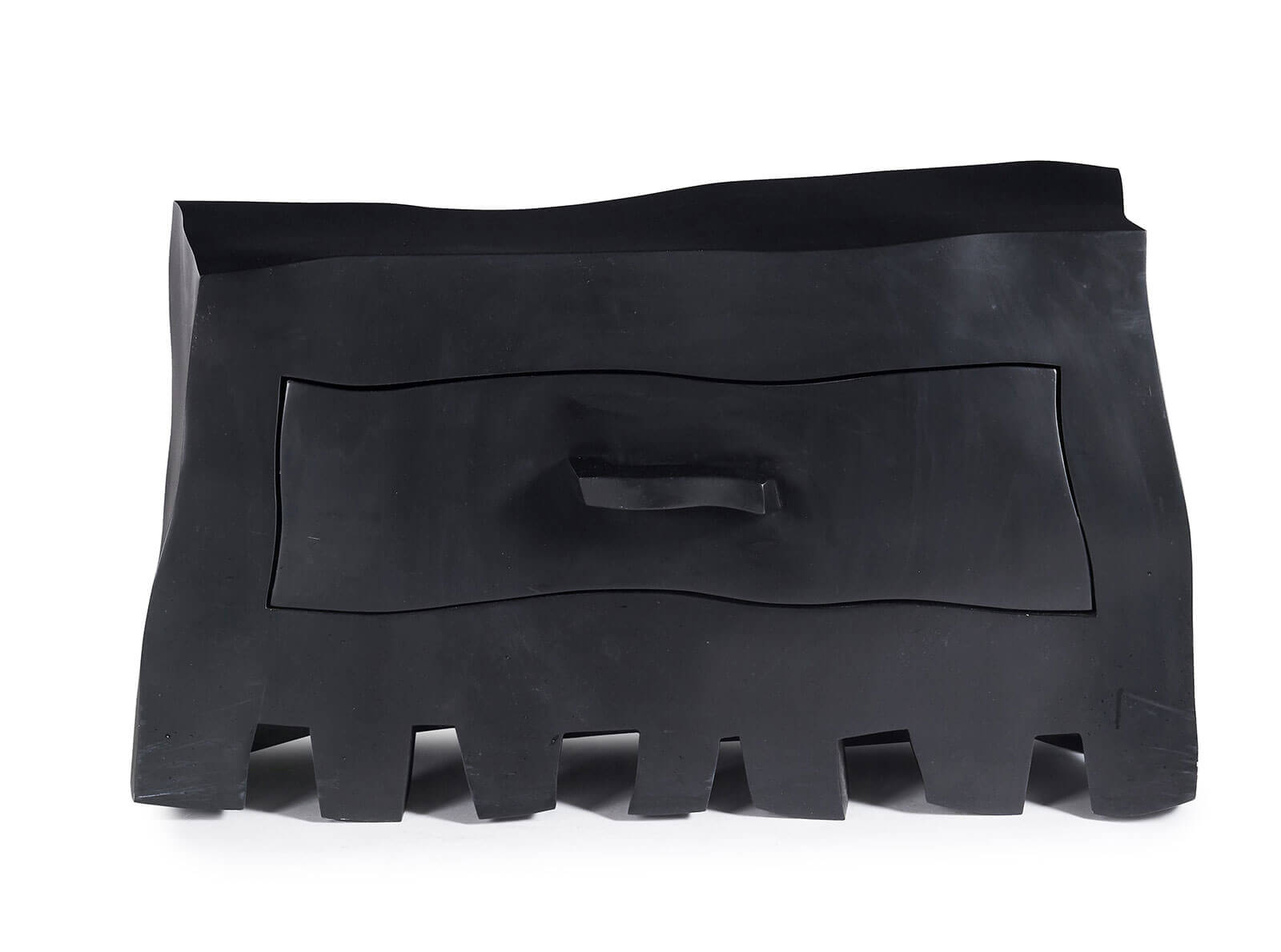
Maarten Baas, ‘Sculpt cabinet with drawer’, 2007. (Estimate: €4,000-€5,000. Sold for €7,150)
COURTESY: Artcurial
Pierre Chapo’s ‘T2IE’, also known as ‘SFAX3’ (1973), a round wooden dining table with diagonally slanting legs and semi-circular benches, €15,600, led the eclectic auction thanks to its countrified appeal.
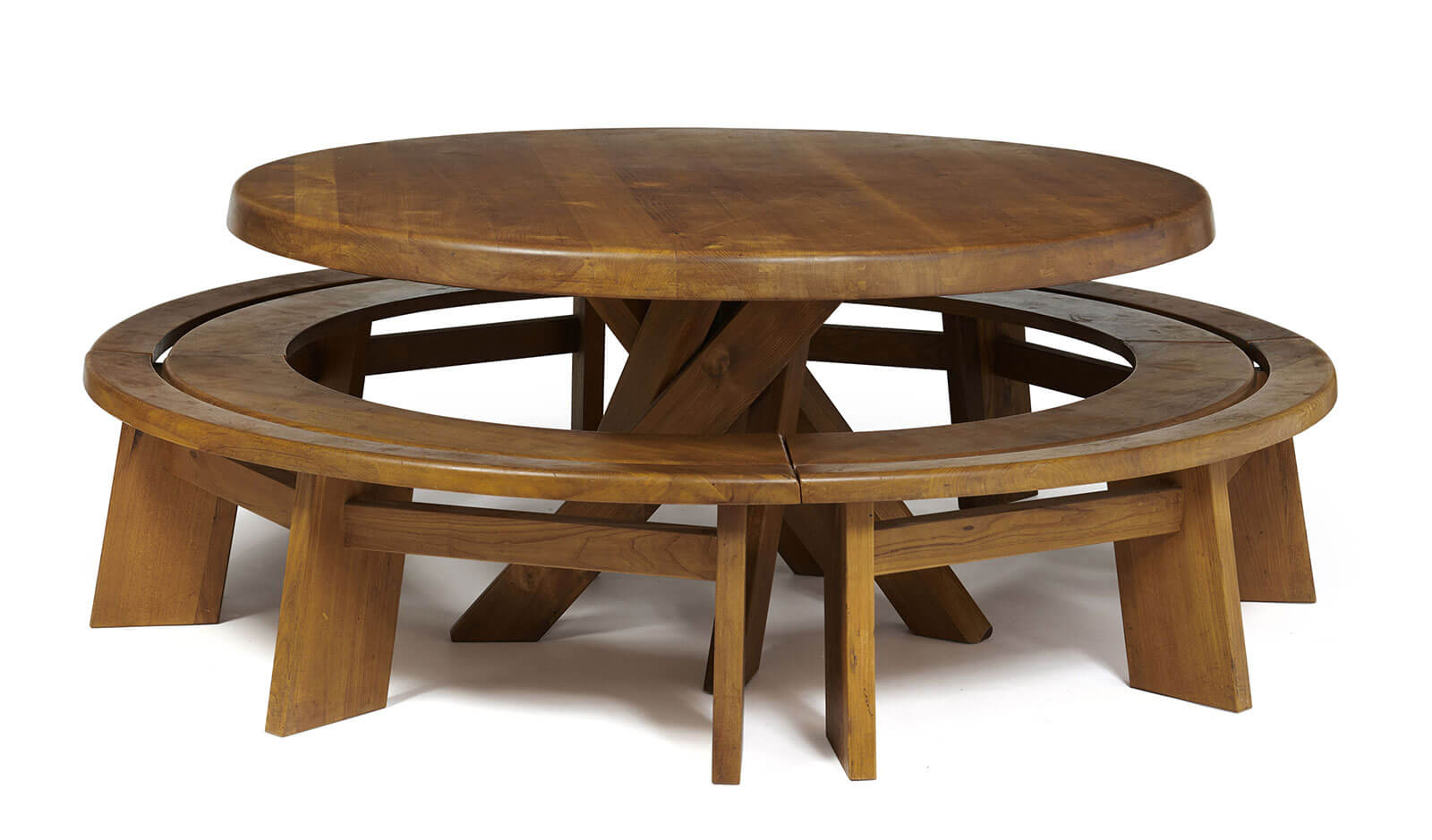
Pierre Chapo, ‘SFAX3’ dining table and four benches, circa 1973. (Estimate: €8,000-€12,000. Sold for €15,600)
COURTESY: Artcurial
Among the standouts were Maarten Baas’ ‘Sculpt Cabinet with Drawer’ (2007), €7,150, a witty play on a chest of drawers, and Ettore Sottsass’s brightly coloured ‘Treetops’ Memphis lamp (1981), €3,380. Furniture by Christian Liaigre sold well – testament to the popularity of the French designer who died aged 77 last September. One example was the elegant ‘Sud’ bench upholstered in Hermès fabric and with bronze legs, €8,190.
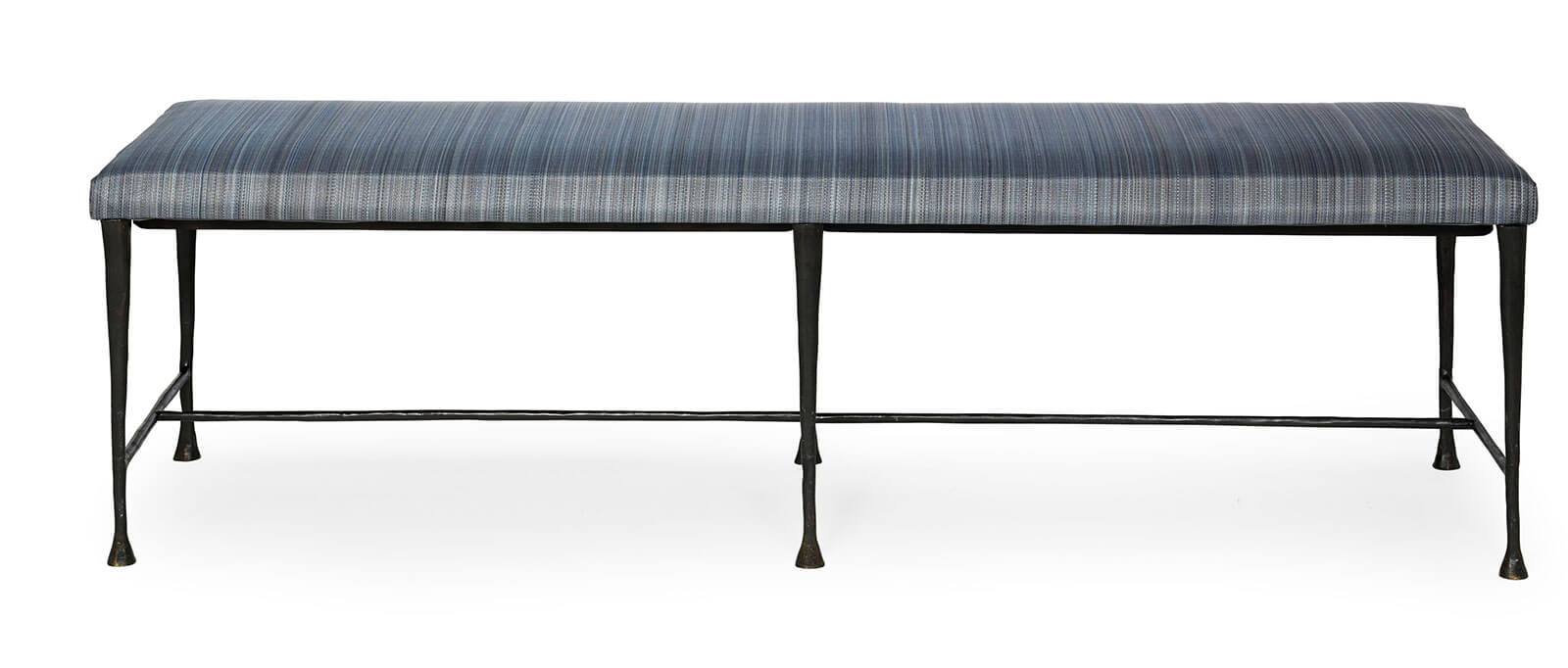
Christian Liaigre, ‘South’ bench, 1994. (Estimate: €1,000-€1,500. Sold for €8,190)
COURTESY: Artcurial
At Sotheby’s, the American philanthropist Pamela Mullin’s Saint-Calais collection from her manor in Normandy totalled €2.2m – double its estimate – with 99 percent of lots sold. Mullin bought the 17th century manor a decade ago, renovated it extensively and hired the French designer Hubert Le Gall to help conceive some of the rooms. Lithographs by David Hockney, Picasso editions and Regency furniture mingled with Le Gall’s whimsical creations. Mullin has recently put the property on the market.
-
Hubert Le Gall, ‘Pear’ candlestick, 2016. (Estimate: €1,000-€1,500. Sold for €8,190)
COURTESY: Sotheby’s / ArtDigital Studio
-
Hubert Le Gall, ‘Créole fruitée’ chest of drawers, 2008. (Estimate: €40,000-€60,000. Sold for €60,480)
COURTESY: Sotheby’s / ArtDigital Studio
“After weeks confined at home, many collectors around the world have wished to change their décor and evolve their collection, either by making new acquisitions or by letting some pieces go,” Florent Jeanniard, co-worldwide head of design at Sotheby’s, says.
A new record for Le Gall was set with ‘Trumeau de Saint-Calais’ (2014), a unique bronze mirror adorned with foliage and two rabbits that fetched €126,000. Le Gall is known for infusing an animal and vegetal spirit into his work – think of a dog lying underneath a side table or a candlestick poking from a pear. Jeanniard comments: “At once poetic, amusing and facetious, with a perfect knowledge of history of art – and decorative arts in particular – he is one of the most important designers of his generation.”
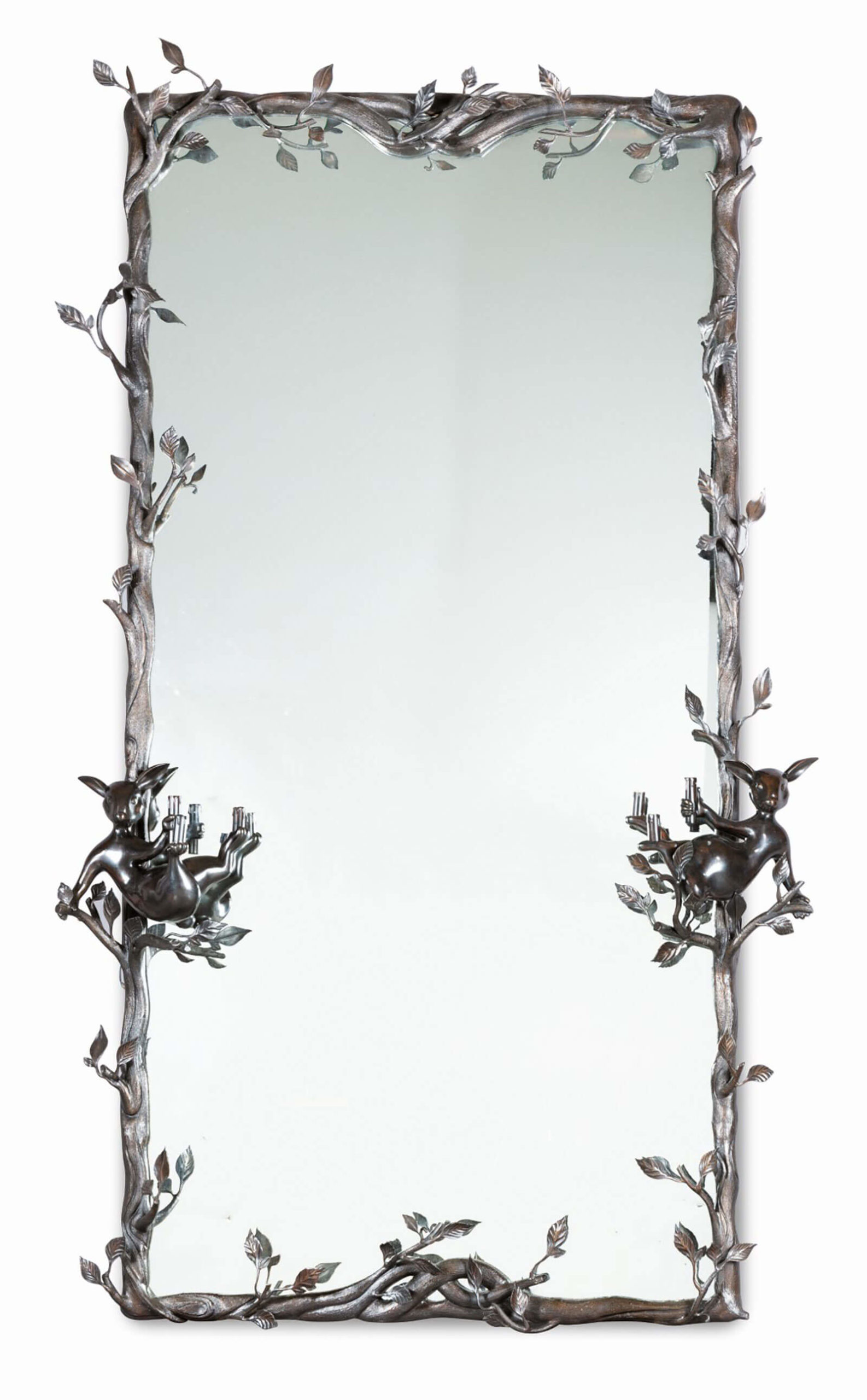
Hubert Le Gall, ‘Trumeau de Saint-Calais’, 2014. (Estimate: €70,000-€100,000. Sold for €126,000)
COURTESY: Sotheby’s / ArtDigital Studio
The lead lot was a slightly weathered 1997 edition of three bronze sheep sculptures by François-Xavier Lalanne, that reached €399,700. Lalanne first unveiled his sheep sculptures in bronze and wool at a Paris fair in 1966, satirising the herd mentality of collectors and bringing the countryside into interiors. A flock of 24 woolly sheep (1965) sold for $5.7m at Christie’s in 2012, while a flock of 10 made from painted stone and bronze (1979) sold for $7.5m at Christie’s in 2011.
Fans of Lalanne will be thrilled to see his ‘Grand Canard’ (1971) – a larger-than-life-size duck – in Gros & Delettrez’s decorative arts sale at Hôtel Drouot auction house on April 12th, 2021. Made of sheet metal, it’s a unique and playful piece, estimate €800,000-€1.2m. The head can be tilted to create an umbrella stand and the wings open to reveal a storage space.
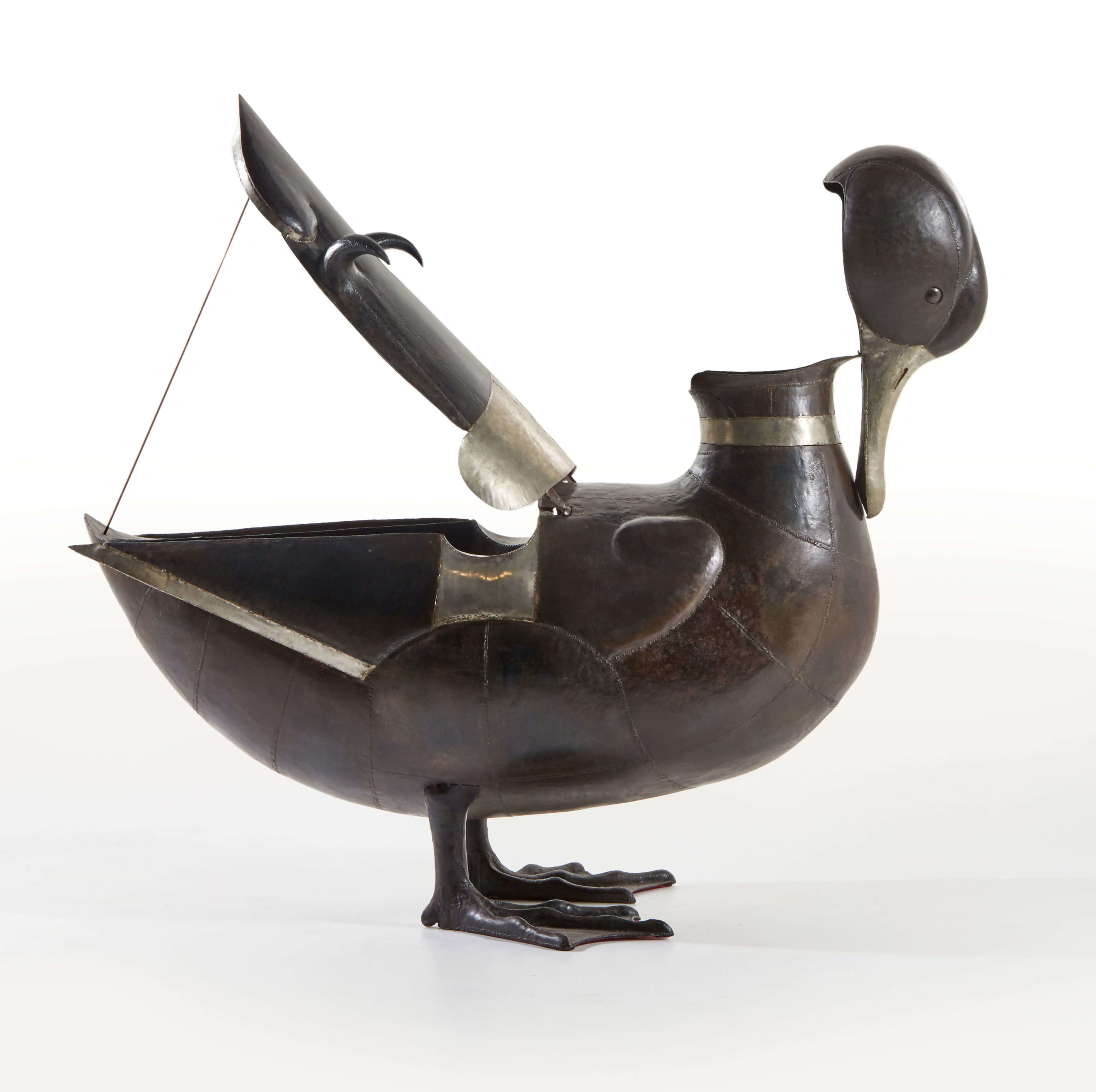
François-Xavier Lalanne, ‘Grand Canard’, 1971. (Estimate: €800,000-€1,200,000)
COURTESY: Gros & Delletrez
“It embodies Lalanne’s surrealistic side of bringing animals out of their natural habitat and putting them inside the home,” Charles-Edouard Delettrez says. “The strength of this piece is that it was hammered by Lalanne’s own hands and is unique – not a bronze edition cast from a mould.”
Co-founded in 1982 by Delettrez’s father Georges Delettrez and Henri Gros, Gros & Delettrez originally specialised in jewellery, watches and oriental paintings. Since diversifying a few years ago, it holds several twentieth-century decorative arts sales annually. Also consigned to the sale (total estimate €1.8m-€2.5m), are three terracotta, patinated plaster and bronze lamps that Alberto Giacometti made for the illustrious interior designer Jean-Michel Frank.
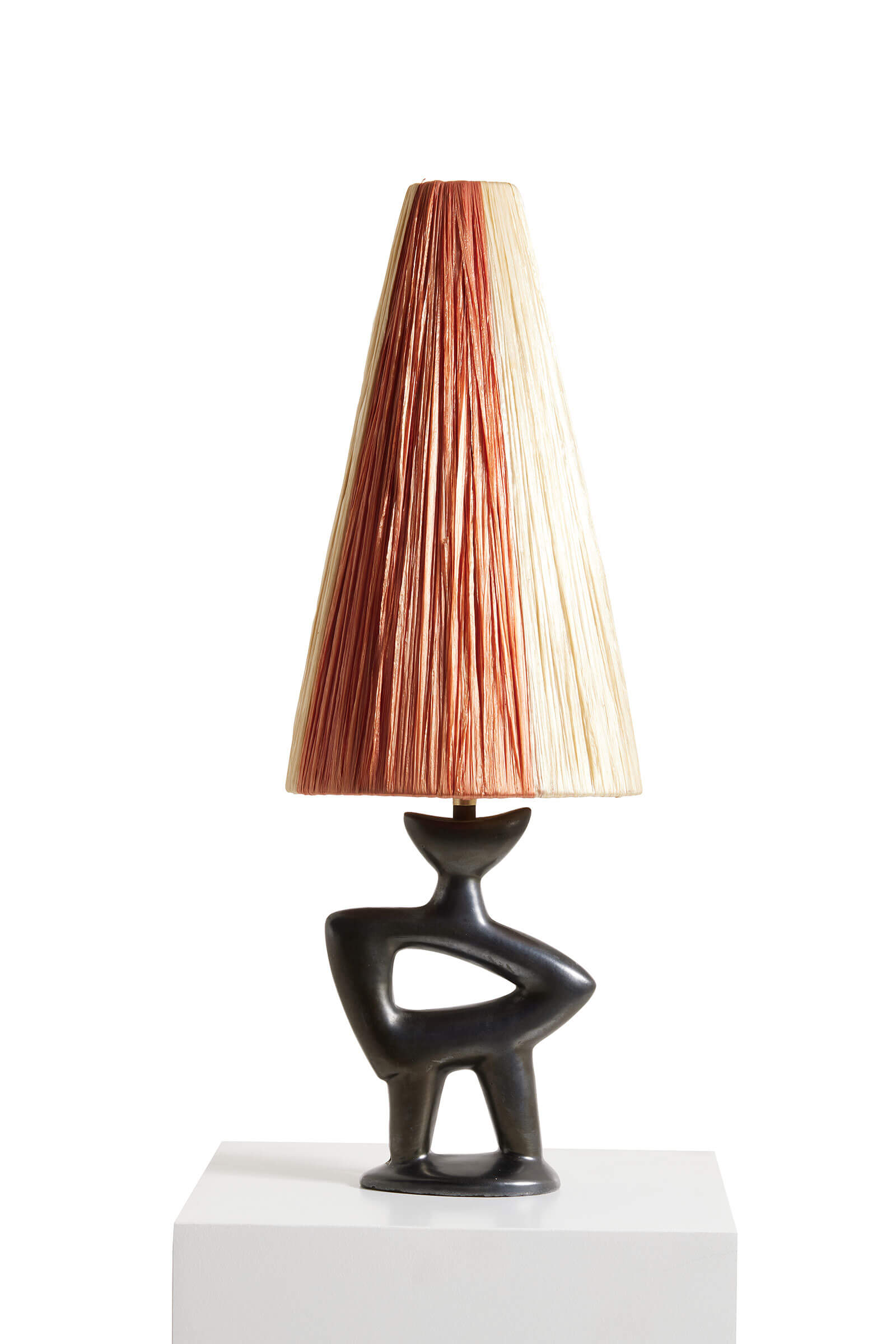
Jean Miotte, ‘Anthropomorphic lamp base’, circa 1950. (Estimate: €20,000-€30,000)
COURTESY: Gros & Delletrez
“The rural exodus is boosting auctions as collectors are actively acquiring pieces to furnish their new homes”
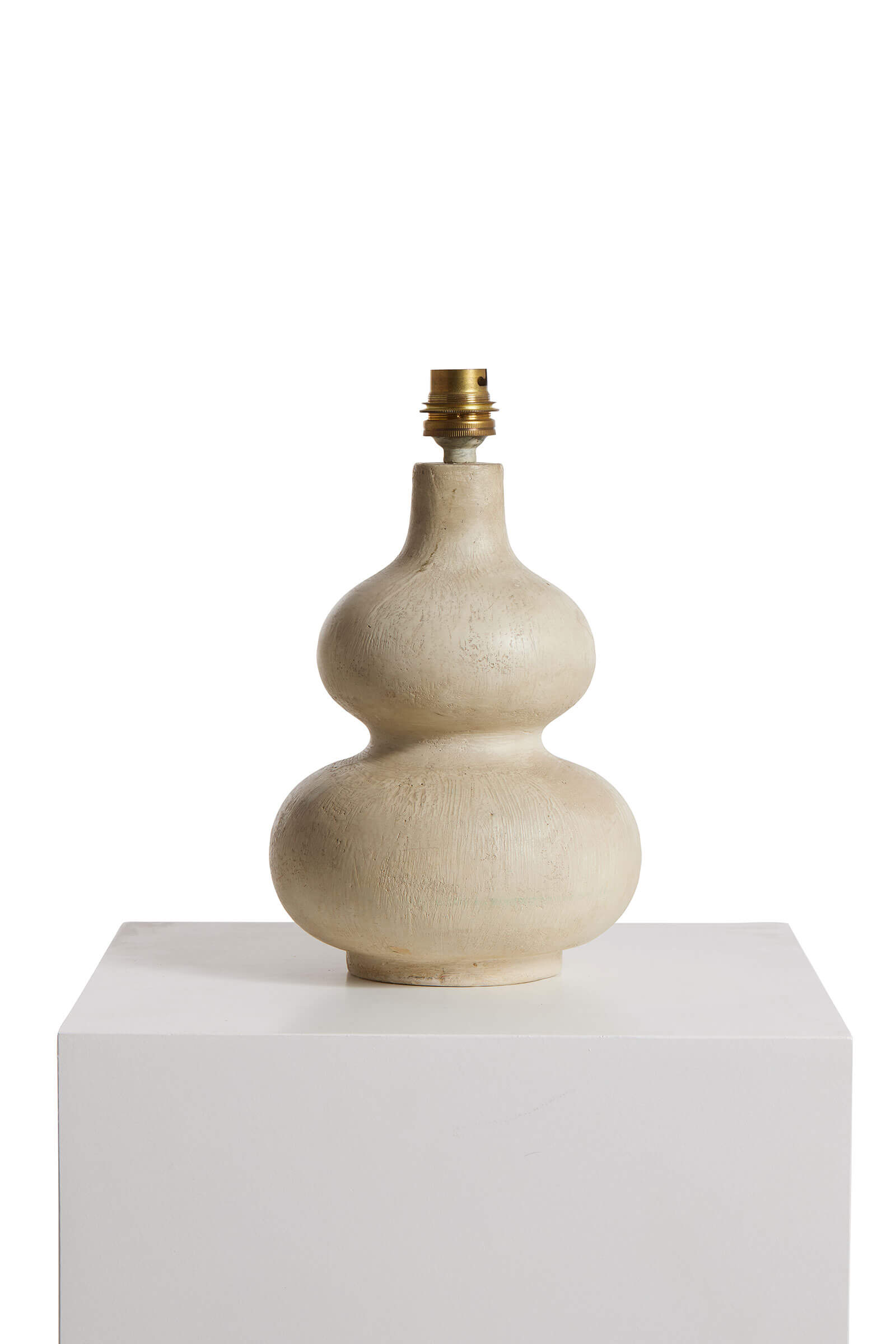
Alberto Giacometti for Jean-Michel Frank, ‘Calabash’ lamp base. (Estimate: €20,000-€30,000)
COURTESY: Gros & Delletrez
“Housebound collectors have been actively updating their interiors, spending time researching and honing their taste”
“Jean-Michel Frank befriended Giacometti in the 1920s and asked him to realise lamps for him; Giacometti had great freedom in these creations and made several similar pieces,” Delettrez imparts.
The sale boasts a wide range of pieces – including African arts, nineteenth century marquetry by Emile Gallé, Pierre Paulin furniture and Tommaso Barbi’s stunning brass floor lamp (estimate €5,000-7,000) with four large, grooved gingko leaves.
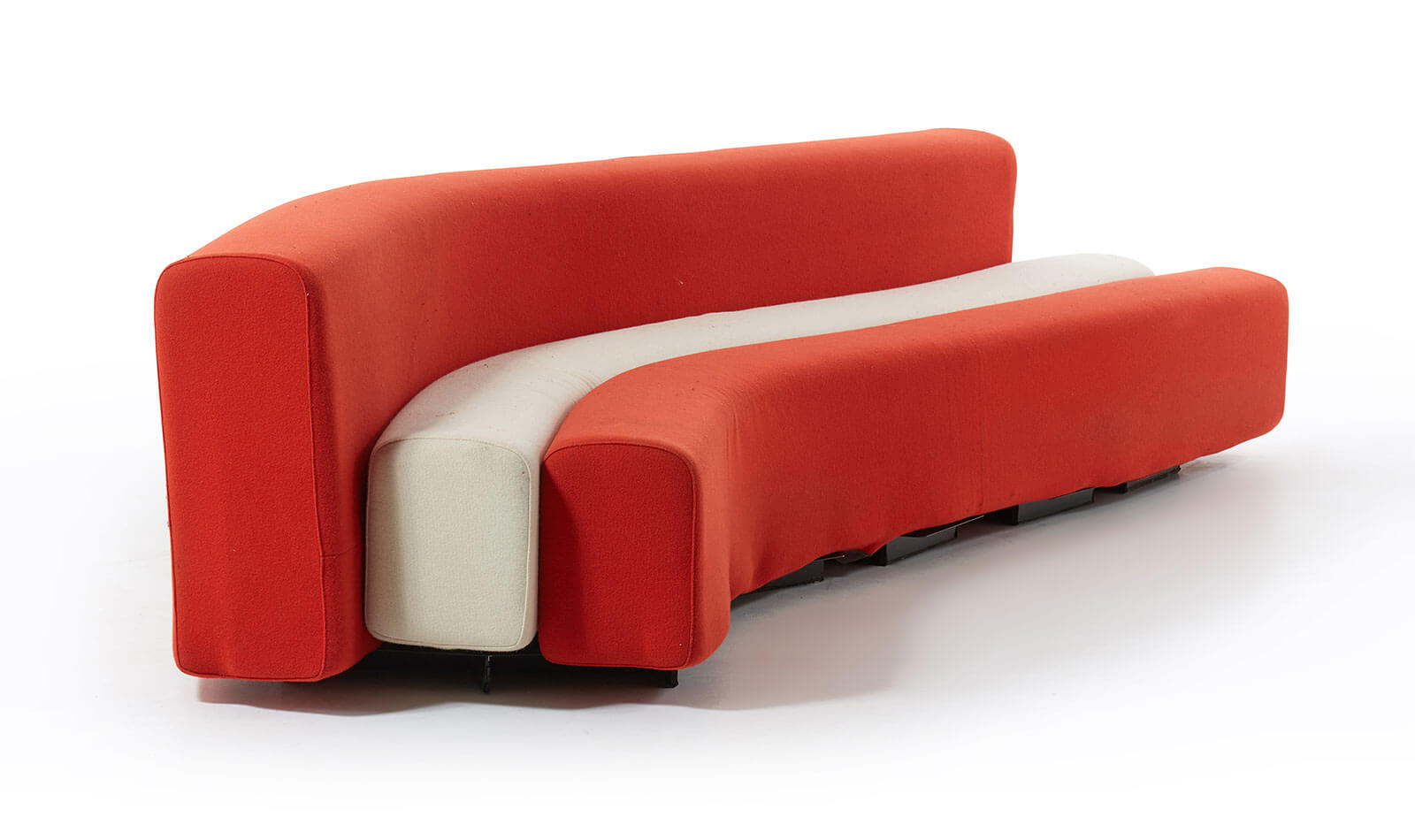
Pierre Paulin, ‘Boudin Amphys’ sofa, 1969. (Estimate: €4,000-€6,000)
COURTESY: Gros & Delletrez
Another upcoming sale is Ernesto Esposito’s collection at Sotheby’s on April 12th (estimate €420,000-600,000). The Italian high-end shoe designer, who collaborated with Sonia Rykiel, Sergio Rossi and Fendi, is an avid collector. ‘Chez Ernesto Esposito à Rome – de Jean Prouvé à Alighiero Boetti’ features artworks by Kiki Smith and Robert Mapplethorpe as well as furniture by Charlotte Perriand and the Memphis group.
The reason why Esposito is selling his pieces is pragmatic: “I have apartments in Rome that none of my friends can travel to and stay in during the pandemic, so I am selling these pieces in order to rent the apartments out. Now is a good time to sell – there’s more interest than before because people have nothing to do.”
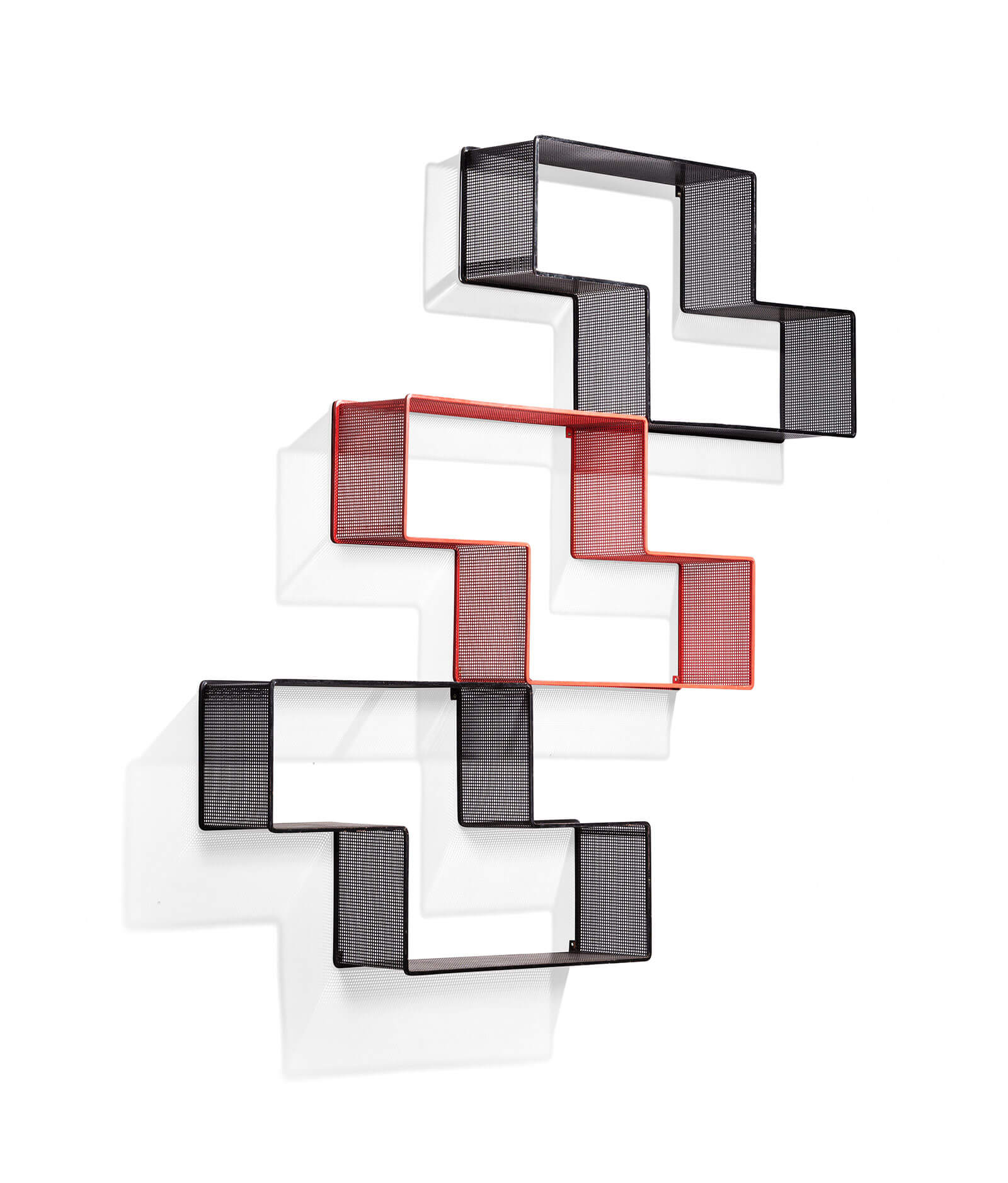
Mathieu Matégot, ‘Dédal’ shelves, 1956. (Estimate: €3,000-€4,000)
COURTESY: Sotheby’s / ArtDigital Studio
Esposito’s penchant for French furniture from the 1950s is conspicuous. “For me, there’s great affinity between French design from the 1940s/1950s and the minimalism of Donald Judd’s sculptures,” he says. “Judd’s sculptures are in the same avant-garde spirit as Prouvé, Perriand and Le Corbusier, which fascinated me.”
The purity of lines and the non-elitist, socialist principles of French design from this period, such as Prouvé and Perriand designing furniture for schools and students, also appeals to Esposito.
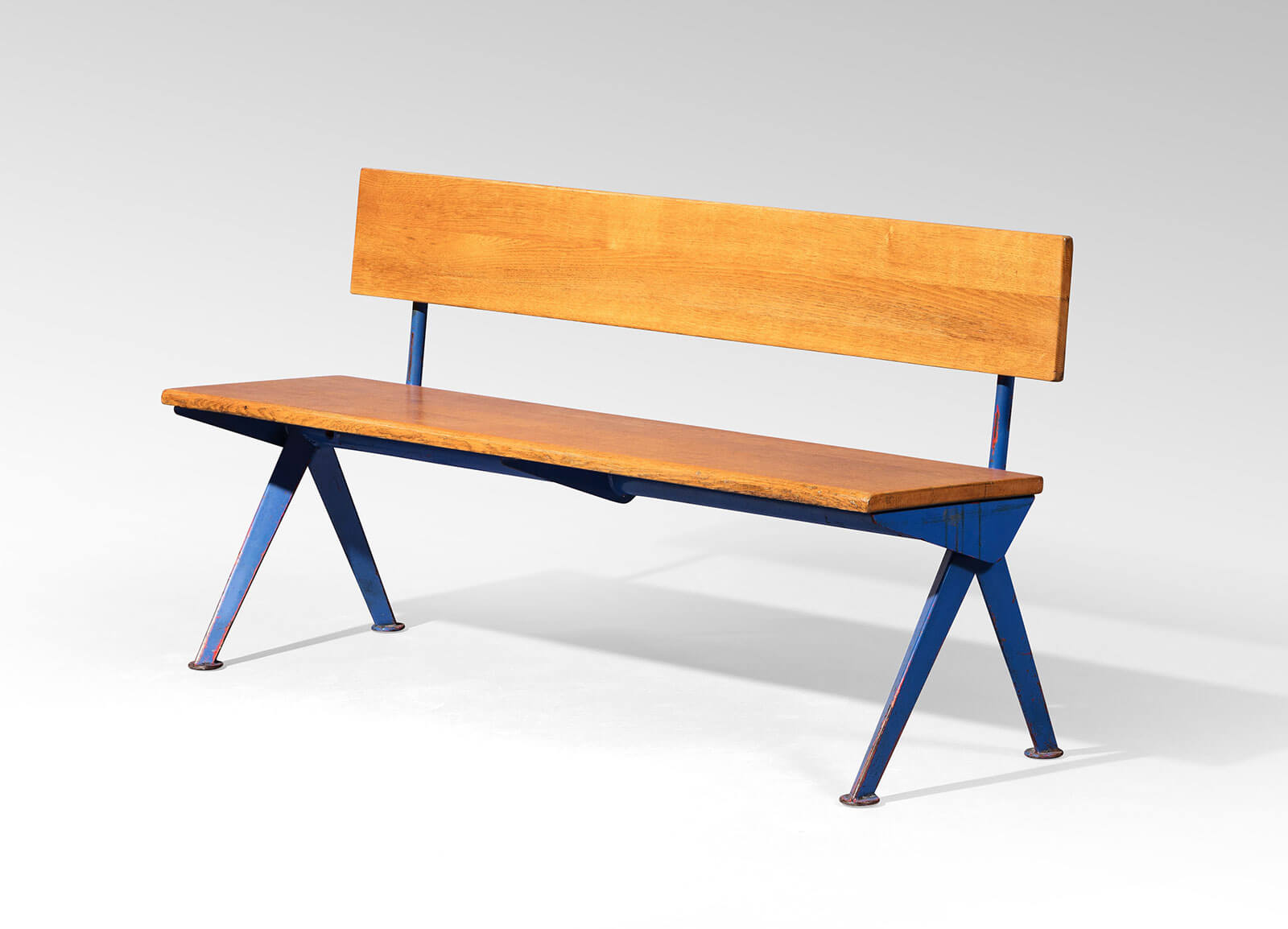
Jean Prouvé, ‘Marcoule’ bench, 1955. (Estimate: €10,000-€15,000)
COURTESY: Sotheby’s / ArtDigital Studio
On offer is the ‘Scal n.450’ – also known as the ‘Antony’ bed (1952) – with swivelling shelf by Prouvé and Perriand (estimate €10,000-€12,000); Perriand’s white, beige and black hanging cabinet that Esposito describes as “incredibly chic” (estimate €30,000-€40,000) and pieces by Pierre Jeanneret, Pierre Guariche, Georges Jouve and Mathieu Matégot.
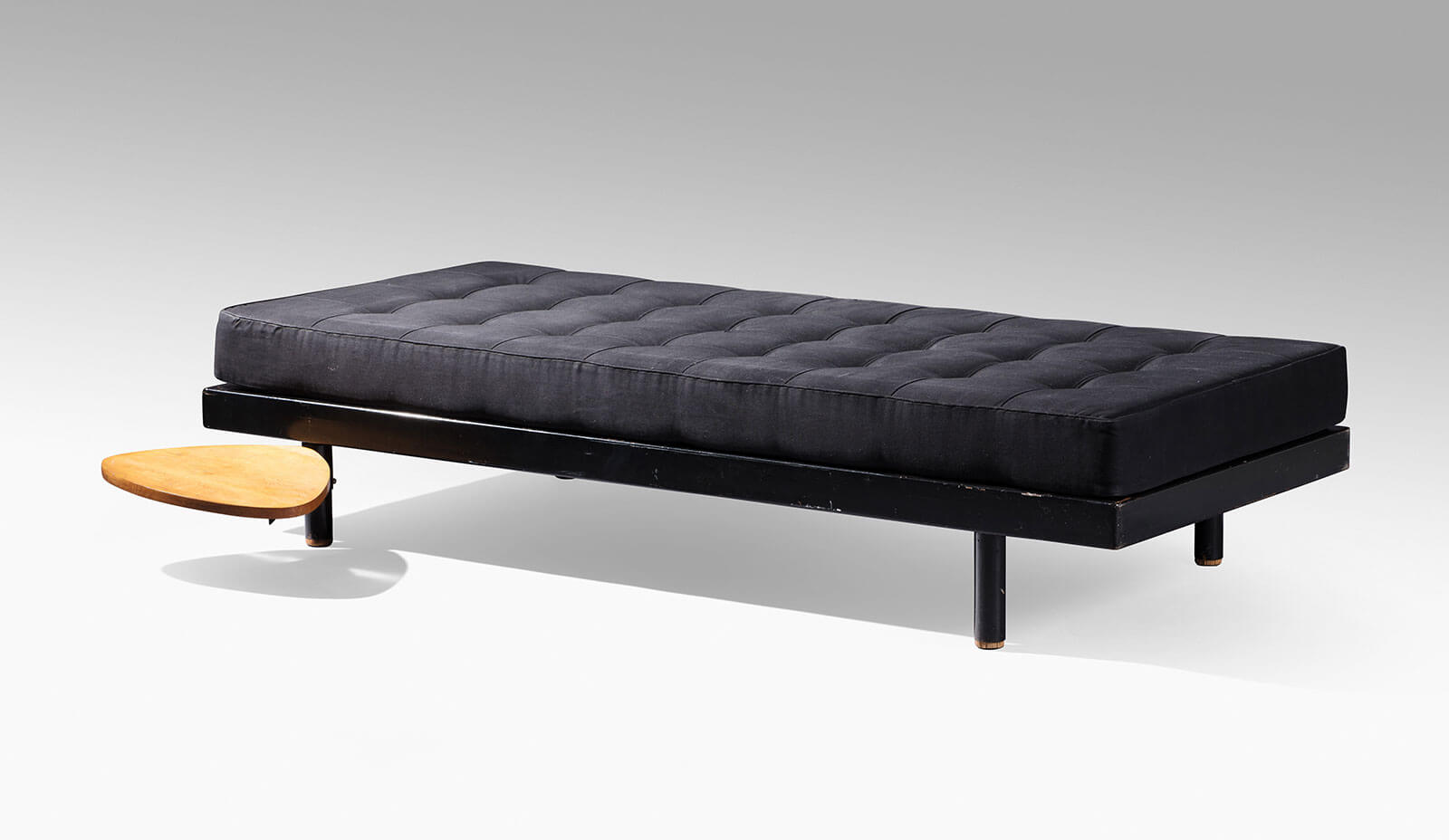
Jean Prouvé and Charlotte Perriand, ‘Scal n.450’, 1952. (Estimate: €10,000-€12,000)
COURTESY: Sotheby’s / ArtDigital Studio
Like Karl Lagerfeld, Esposito fell under the spell of Memphis and is also letting go of several pieces by Nathalie du Pasquier and Sottsass. “Coherence doesn’t exist in art,” Esposito says, laughing, about how trends and tastes evolve.
‘L’Univers des Arts Décoratifs’ is at Hôtel Drouot on April 12th, 2021.
‘Chez Ernesto Esposito à Rome – de Jean Prouvé à Alighiero Boetti’ is at Sotheby’s on April 12th, 2021.

